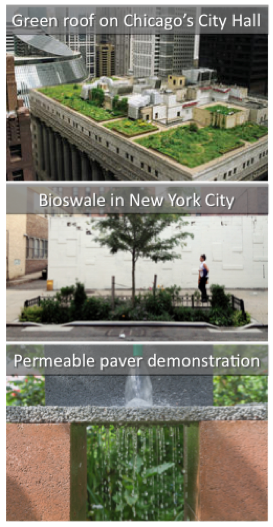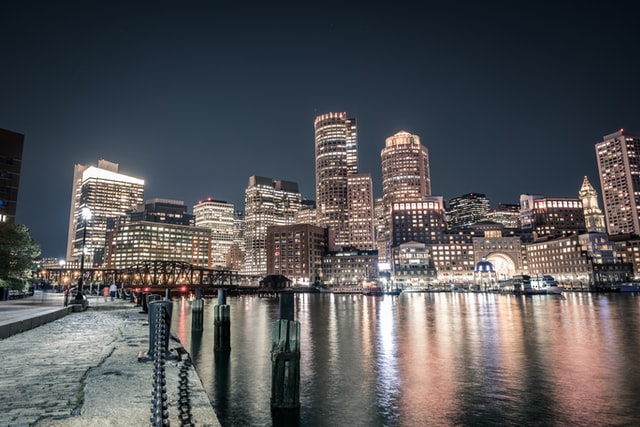by Justin Gundlach
What is green infrastructure (GI) and why does New York City need more of it?
 Green roofs, bioswales, and porous pavers are all examples of GI (see images at right), which one article defines as “a network of approaches and technologies that mimic, maintain, or restore natural hydological features in the urban landscape.” What all forms of GI have in common is that they retain or detain stormwater, preventing it from just becoming runoff that flows into a sewer system. They generally also have a higher albedo and retain heat less efficiently than impervious materials (making GI a promising means of mitigating the urban heat island effect that will grow worse with climate change). In addition to slowing runoff and being cooler than conventional surfaces, GI also tends to improve buildings’ energy efficiency and, sometimes, ambient air quality as well.
Green roofs, bioswales, and porous pavers are all examples of GI (see images at right), which one article defines as “a network of approaches and technologies that mimic, maintain, or restore natural hydological features in the urban landscape.” What all forms of GI have in common is that they retain or detain stormwater, preventing it from just becoming runoff that flows into a sewer system. They generally also have a higher albedo and retain heat less efficiently than impervious materials (making GI a promising means of mitigating the urban heat island effect that will grow worse with climate change). In addition to slowing runoff and being cooler than conventional surfaces, GI also tends to improve buildings’ energy efficiency and, sometimes, ambient air quality as well.
New York, a city covered in impervious asphalt, concrete, roofing materials, and more, has several practical problems that GI can help address. One of those practical problems—the effect of stormwater runoff on the City’s wastewater treatment plants—has led to regular violations of the Clean Water Act. Those violations have in turn motivated the City to look to GI as a means of stemming the flow of stormwater runoff and, specifically, to try to replace impervious surfaces with GI wherever it is feasible and cost-effective to do so. On public property, this has meant a mushrooming of bioswales and the redesign of once-impervious parks. On private property, however, it has not meant much—not because the City’s Department of Environmental Protection is disinclined to install GI on private property, but because a thicket of issues tends to get in the way of efforts to spend public money on the installation of valuable assets on private property.
A new Sabin Center whitepaper examines this troublesome thicket of legal, administrative, political, and practical issues. In addition to describing their root causes and GI-stymieing effects, it also provides background on the benefits of GI and suggestions for what can be done at the city- and state levels to help bring more of those benefits to New York City via GI installations on private property.




